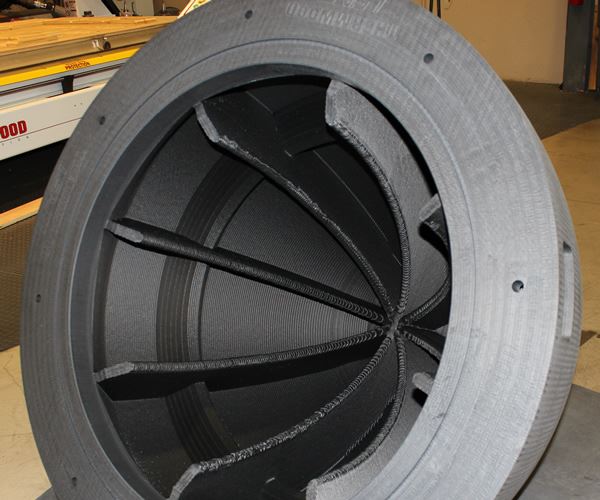Thermwood and US Navy explore additive manufacturing for ships and ship systems
The validation program centered on printing an unclassified scale nose of a submarine using Thermwood’s Large Scale Additive Manufacturing (LSAM) system.
Thermwood Corp. (Dale, IN, US) has entered into a collaborative program with the Naval Surface Warfare Center, Carderock Division (Potomac, MD, US) to explore the use of additive manufacturing technology in developing marine models for ship and ship systems testing.
The initial validation program was centered on printing an unclassified scale nose of a submarine using Thermwood’s Large Scale Additive Manufacturing (LSAM) system – a full-fledged industrial additive manufacturing system intended for the production of large scale components. The part was printed using 20% carbon fiber filled ABS in 11 hours and 45 minutes using traditional horizontal layer printing and a 40 mm melt core. Final trim required 5 hours. Both printing and trimming were completed on the same machine, using Thermwood’s 10 ft x 20 ft LSAM at its demonstration lab in Southern Indiana.
Because of layer cooling requirements, the print rate for this part was less than half of the maximum rate the machine is capable of, according to Thermwood. The company expects that, moving forward, the program will include the printing of additional components using both horizontal and vertical layer printing.
Related Content
-
PEEK vs. PEKK vs. PAEK and continuous compression molding
Suppliers of thermoplastics and carbon fiber chime in regarding PEEK vs. PEKK, and now PAEK, as well as in-situ consolidation — the supply chain for thermoplastic tape composites continues to evolve.
-
Plant tour: Albany Engineered Composites, Rochester, N.H., U.S.
Efficient, high-quality, well-controlled composites manufacturing at volume is the mantra for this 3D weaving specialist.
-
Combining multifunctional thermoplastic composites, additive manufacturing for next-gen airframe structures
The DOMMINIO project combines AFP with 3D printed gyroid cores, embedded SHM sensors and smart materials for induction-driven disassembly of parts at end of life.











.jpg;maxWidth=300;quality=90)



